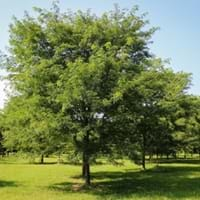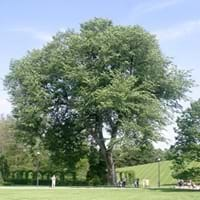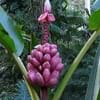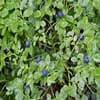Life Span
Annual
Perennial
Origin
China, Korea
North America
Types
Sophora japonica
Water elm
Habitat
Humid climates, Loamy soils, Low annual rainfall regions, Wet ground, Woods
Floodplains, Hillside, stream banks, Swamps, Upland
USDA Hardiness Zone
5-9
3-9
Sunset Zone
2a, 2b, 3a, 3b, 4, 5, 6, 7, 8, 9, 10, 11, 12, 13, 14, 15, 16, 17, 18, 19, 20, 21, 22, 23, 24
1a, 1b, 2a, 2b, 3a, 3b, 4, 5, 6, 7, 8, 9, 10, 11, 14, 15, 16, 17, 18, 19, 20, 21
Habit
Oval or Rounded
Upright/Erect
Flower Color
White, Light Green
Green
Flower Color Modifier
Bicolor
Bicolor
Leaf Color in Spring
Dark Green
Light Green
Leaf Color in Summer
Dark Green
Dark Green
Leaf Color in Fall
Yellow, Dark Green
Light Yellow
Leaf Color in Winter
Not Available
Not Available
Leaf Shape
Elliptic
Oblique base
Plant Season
Spring, Summer, Fall, Winter
Spring, Summer, Fall, Winter
Sunlight
Full Sun
Full Sun
Type of Soil
Clay, Loam, Sand
Loam
The pH of Soil
Acidic, Neutral, Alkaline
Acidic, Neutral
Soil Drainage
Average
Average
Bloom Time
Summer
Early Spring
Tolerances
Pollution, Drought, Soil Compaction
Cold climate, Drought, Pollution, Salt
Where to Plant?
Ground
Ground
How to Plant?
Seedlings, Transplanting
Rooted stem cutting, Seedlings, Stem Planting
Plant Maintenance
Medium
Low
Watering Requirements
occasional watering once established, Requires watering in the growing season
Average Water Needs, Requires regular watering, Requires watering in the growing season, Water Deeply
In Summer
Less Watering
Ample Water
In Spring
Less Watering
Average Water
In Winter
Drought Tolerant
Average Water
Soil pH
Acidic, Neutral, Alkaline
Acidic, Neutral
Soil Type
Clay, Loam, Sand
Loam
Soil Drainage Capacity
Average
Average
Sun Exposure
Full Sun
Full Sun
Pruning
Prune when young, Remove dead branches
Remove dead branches, Remove dead or diseased plant parts, Remove hanging branches
Fertilizers
All-Purpose Liquid Fertilizer
Fertilize every year, fertilize in growing season, Nitrogen, Phosphorous, Potassium
Pests and Diseases
Leaf spot, Red blotch, Woodpecker feeding
Bark beetles, Beetles, Borers, Mites, Moth, Red blotch, Scale
Plant Tolerance
Drought, Dry soil, Soil Compaction
Cold climate, Drought, Salt
Flowers
Showy
Insignificant
Flower Petal Number
Single
Single
Foliage Texture
Medium
Medium
Foliage Sheen
Matte
Matte
Attracts
Bees, Hummingbirds, Woodpeckers
Not Available
Allergy
Eczema, Nausea, Swelling in the face
allergic reaction, Asthma
Aesthetic Uses
Bouquets, Landscape Designing, Showy Purposes
Landscape Designing
Beauty Benefits
Nourishes scalp, Restores Hair Colour, Stops hair loss
No Beauty Benefits
Edible Uses
Sometimes
Yes
Environmental Uses
Air purification, Erosion control, Forms dense stands, Shadow Tree
Absorbs greenhouse gases, Absorbs huge amounts of CO2, Air purification, Food for birds, Forms dense stands, Nesting sites for birds, Prevent Soil Erosion, Shelter for wildlife, Wildlife
Medicinal Uses
Diuretic, Fever, Muscle Pain, Vomiting
Antispasmodic, Astringent
Part of Plant Used
Bark, Leaves
Bark, Stem, Tree trunks, Wood
Other Uses
Used as a laxative, Used as firewood, Used as Ornamental plant, Used in construction
Used as firewood, Used for woodware, Used in biomass, Used in construction, Used in Furniture, Used in paper industry, Used in pulpwood and lumber production, Wood is used for making furniture, Wood is used for ship building, Wood is used fore making tools, Wood is used in construction, Wood log is used in making fences
Used As Indoor Plant
No
No
Used As Outdoor Plant
Yes
Yes
Garden Design
Shade Trees, Street Trees, Topiary / Bonsai / Espalier
Feature Plant, Shade Trees, Street Trees
Botanical Name
SOPHORA japonica
ULMUS americana
Common Name
Chinese Scholartree, Japanese Pagoda
American Elm
In Hindi
Gobur champ
अमेरिकी एल्म
In German
Japanischer Schnurbaum
amerikanische Ulme
In French
Styphnolobium japonicum
orme d'Amérique
In Spanish
Styphnolobium japonicum
olmo americano
In Greek
Styphnolobium japonicum
American Elm
In Portuguese
Styphnolobium japonicum
olmo americano
In Polish
Perełkowiec japoński
Amerykański wiązu
In Latin
Styphnolobium japonicum
Latin ulmo
Phylum
Angiosperms
Magnoliophyta
Class
Magnoliopsida
Magnoliopsida
Genus
Styphnolobium
Ulmus
Clade
Angiosperms, Eudicots, Rosids
Angiosperms, Eudicots, Rosids
Tribe
Sophoreae
Not Available
Subfamily
Faboideae
Not Available
Number of Species
Not Available
Importance of Japanese Pagoda and Elm
Want to have the most appropriate plant for your garden? You might want to know the importance of Japanese Pagoda and Elm. Basically, these two plants vary in many aspects. Compare Japanese Pagoda and Elm as they differ in many characteristics such as their life, care, benefits, facts, etc. Every gardener must at least have the slightest clue about the plants he wants to plant in his garden. Compare their benefits, which differ in many ways like facts and uses. The medicinal use of Japanese Pagoda is Diuretic, Fever, Muscle Pain and Vomiting whereas of Elm is Antispasmodic and Astringent. Japanese Pagoda has beauty benefits as follows: Nourishes scalp, Restores Hair Colour and Stops hair loss while Elm has beauty benefits as follows: Nourishes scalp, Restores Hair Colour and Stops hair loss.
Compare Facts of Japanese Pagoda vs Elm
How to choose the best garden plant for your garden depending upon its facts? Here garden plant comparison will help you to solve this query. Compare the facts of Japanese Pagoda vs Elm and know which one to choose. As garden plants have benefits and other uses, allergy is also a major drawback of plants for some people. Allergic reactions of Japanese Pagoda are Eczema, Nausea and Swelling in the face whereas of Elm have allergic reaction and Asthma respectively. Having a fruit bearing plant in your garden can be a plus point of your garden. Japanese Pagoda has no showy fruits and Elm has no showy fruits. Also Japanese Pagoda is not flowering and Elm is not flowering . You can compare Japanese Pagoda and Elm facts and facts of other plants too.





